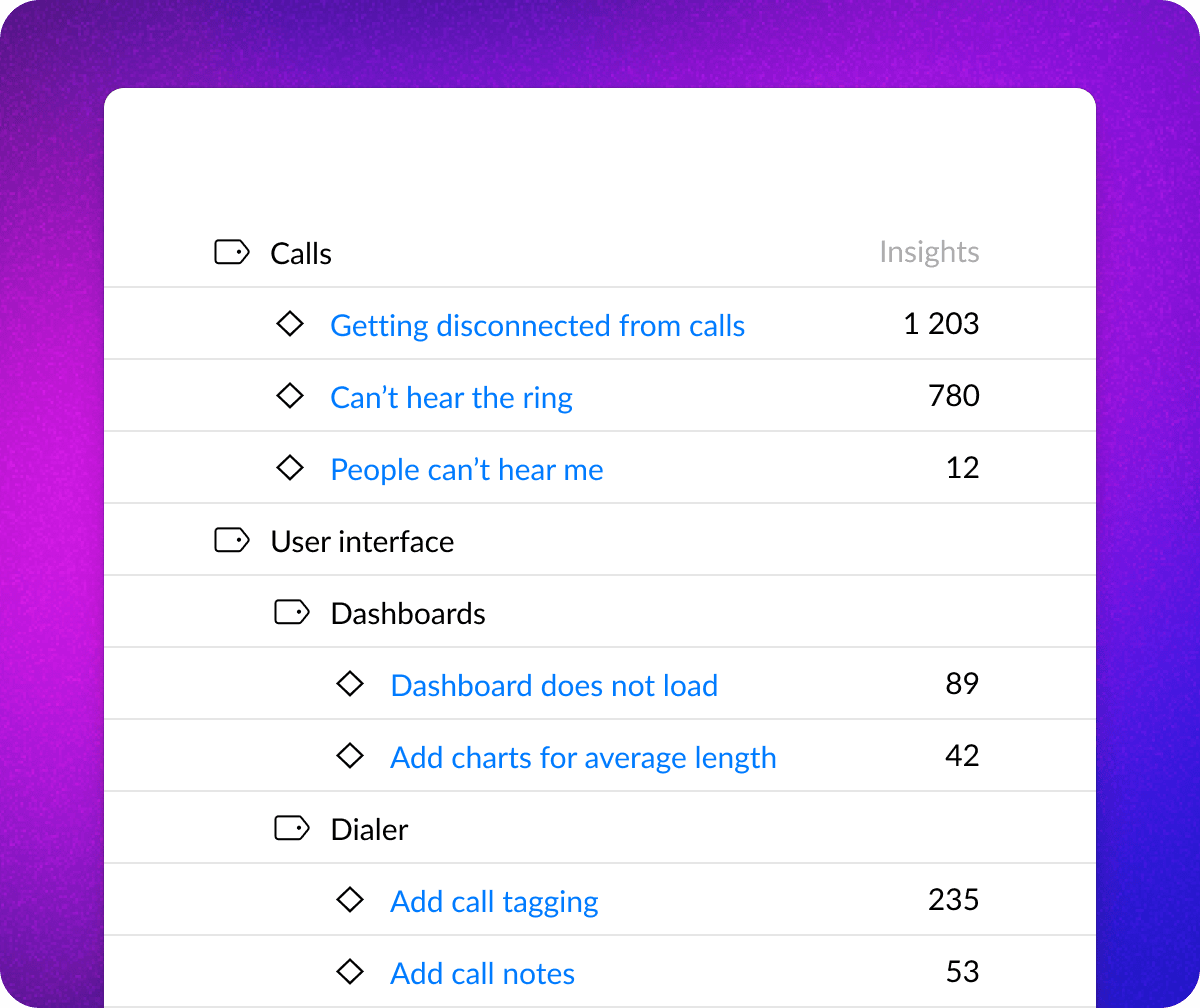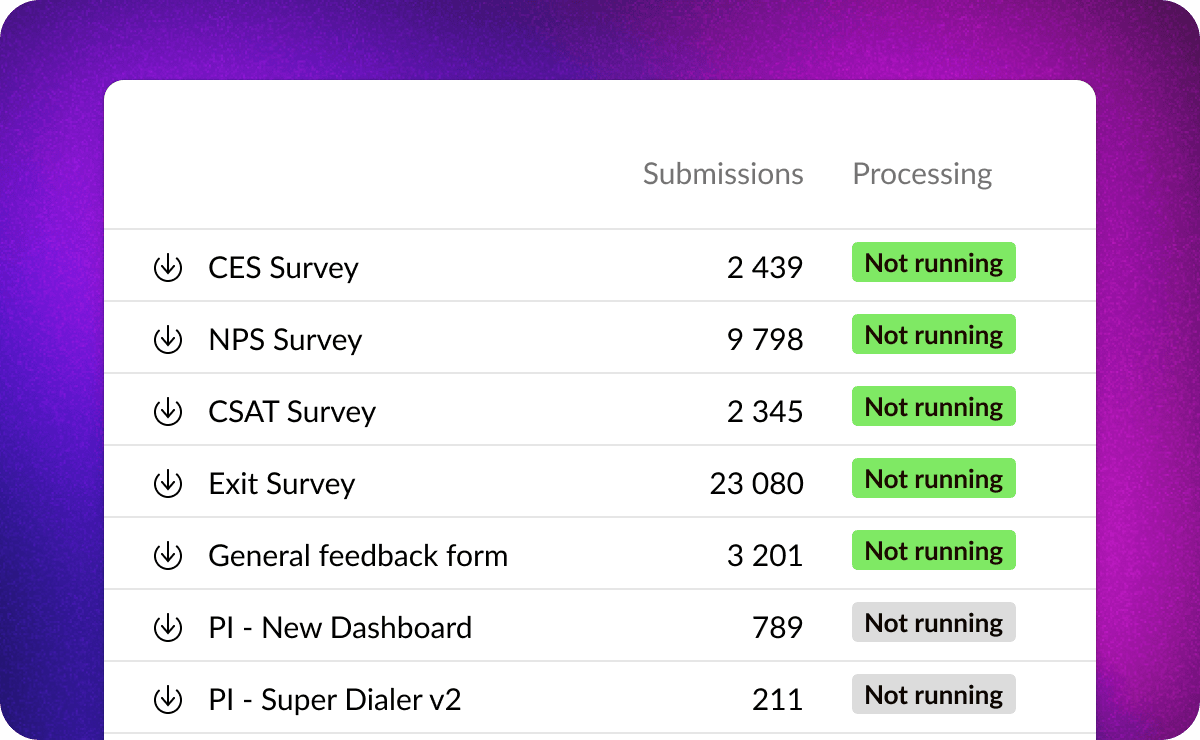Nov 21, 2023
This is a major update, bringing automation and flexibility.
Introducing Studies!
Previously, you had one taxonomy consisting of tags and topics. Now you can create multiple taxonomies with Studies!

A Study is a place where you can categorize and organize feedback from your data sources. You can have one or multiple different Studies.
Each Study has its own taxonomy of tags and topics, and each study can have one or multiple data sources.
For example, a study called "All Product Feedback" could aggregate and process all your product feedback from multiple different sources into a unified taxonomy.

Or you can have a Study like "Exit survey," where you would funnel only submissions from one exit form, looking for specific insights.
You can even have multiple Studies for the same "Exit survey" data, each automatically processing the data in a different way.
It's up to you.
Automate with Sources
A Source can be a feedback form, NPS survey, chat transcript, or any other qualitative data.

You can add one or multiple sources to a Study.
The most significant feature of Sources is automation. You can let the AI process the data. You simply type in what you are looking for in the data and how it should be categorized. It's very easy, no code required—just type the words.

We've made it flexible, as automation for each Source can be configured separately. This is very handy because each set of data may need a different approach for processing. For example, data from a simple feedback form has a different context than data from a chat transcript.
You can do complex tasks like:
Processing the same data source multiple times in different ways, allowing you to experiment with your data.
Running multiple analyses in parallel.
Having multiple products, each with its own taxonomy.
Now you can send data to sources through our API. CSV import and integrations are coming soon.
API improvements
Our API is now easier to use, preventing you from accidentally messing up your data.
We've also updated and improved our API documentation, providing you with more examples.
